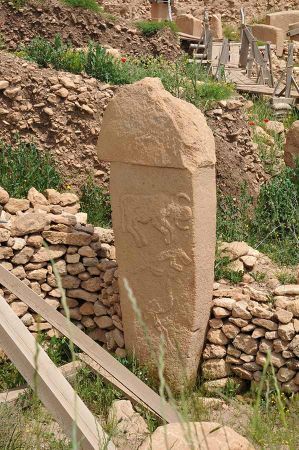Symbols of sanctuary Göbekli Tepe the first characters?
- Written by Portal Editor
For thousands of years, people have been communicating through language, passing on knowledge and techniques through oral transmission of what they have learned, with all the erroneous distortions of meaning by omitting or adding details of the original content.
Psychological, social and cultural factors in the human environment inevitably always play an important role in oral tradition. Information important for survival, which has a similar core, but also secret knowledge, rituals, myths, legends and legends were passed on orally around the world, although their details can vary considerably. Even today there are cultures in which the oral transmission of traditions and knowledge is quite common.
Olmecs are associated with the use of writing

Many millennia ago, Ice Age hunters left behind their living environment in the form of cave paintings in which the animal world but also the hunt itself was depicted. How and when the first symbols and then characters developed from such concrete images is still a matter of scientific debate. Perhaps a solution to the existing questions can now be found in the unique monuments of the stone columns of Göbekli Tepe, an excavation site by the unfortunately recently deceased archaeologist Klaus Schmidt near the Turkish city of Sanliurfa. For years, Schmidt had led excavations there at man-made "burial mounds" that unearthed the pillar-like columns from around 12,000 years ago. The abundant animal images and symbols of the Stone Age sanctuary Göbekli Tepe indicate the first known change to symbolic interpretation: scriptural precursors from 12,000 years ago.

The archaeologist Ludwig Morenz sees in the imagery of Göbekli Tepe clear indications of an incipient abstraction and thus the beginning of a symbolic coding - more than 5,000 years before the first Egyptian hieroglyphs.
“The high-altitude sanctuary is something like the missing link between images and the first characters,” says Ludwig Morenz. "Göbekli Tepe stands for the development of pure images to encode meaning that goes beyond this." While the depiction of a bull in the cave of Altamira in Spain is a direct image of the animal, a bull's head in the high-altitude sanctuary in Turkey is to be understood as an abstract symbol for a deity, detached from the primary meaning of the image. These almost abstract animal figures could be a first step towards writing.
Abstracted images as symbols
Already at the end of the Ice Age, the foundations were laid on which the later cultural revolution could be built. However: “This early visual language is not yet written characters,” the researcher clarifies. Characters are much more differentiated and also contain information about how a certain character is pronounced. Nevertheless, this early form of pictographs is more than twice as old as the oldest characters of the ancient Egyptians.
Similar symbols elsewhere too
According to the researcher, Göbekli Tepe impressively shows how complex and specialized the Stone Age society was around 12,000 years ago. “The use of language, hand and brain went hand in hand,” says Morenz. To the extent that people back then created an abstract visual language with great technical and intellectual skill, they penetrated beyond the challenges of everyday life into religious spheres and confronted humanity's fundamental questions about the afterlife. “It is about the beginning of media development and the departure into new thinking spaces,” says Morenz.
These are mostly business texts. However, the script used does not allow any conclusions to be drawn about the language, so it is incorrect to describe this script as Sumerian in the strict sense.
Few researchers believe that the symbolic signs of the Vinča culture in southeastern Europe, which dates back to the 5th millennium BC.
It is dated to be an actual writing.
Ähnliche Symbole auch anderswo
The theory, which is supported by evidence, about the emergence of writing systems in largely geographically separated cultures, is repeatedly countered by individual scientists and private scholars in various variations with the thesis that the oldest known writing systems were developed from an older, partly common, globally widespread character layer. However, no evidence has yet been presented that can withstand scientific criticism.
However, from all the discussions about new discoveries, it becomes clear again and again how little current knowledge about human development actually is.
Please read as well:
The Great Hall of the Historical City Hall of Wuppertal
The Eger Castle - fortification of the town of Cheb
https://www.alaturka.info/en/turkey-country/southeastern/6287-symbols-of-sanctuary-goebekli-tepe-the-first-characters/amp#sigProId7621de1791
